Text
What Is The Difference Between An Effluent Treatment Plant(ETP) & A Sewage Treatment Plant(STP) ?
Water treatment to remove dangerous pollutants & impurities is critical. The globe is mostly covered in water, yet if we assume a condition in that all of the water that exists on its surface is gathered in a tub, then potable/drinkable water accounts for less than a spoon.
Water in its current situation exists as an inadequate supply in many areas due to excessive utilization & exploitation . Purifying & then re-utilizing water whenever practically available at an ease is critical in such cases.
During the processing & recycling, WasteWater Treatment Plants transform polluted WasteWater into usable or consumptibe water. At the moment, such system facilities serve a purpose in almost every industrial area where some extent of pure water is required for individual persons , staff , employees , or in several equipments to function .
When pollutants like arsenic , lead , & other heavy elements as well as metals , or harmful chemicals like fertilizers & pesticides get introduced into water, its physical & chemical characteristics change , making the water unhealthy for drinking . As a consequence of which , it is highly recommended that this sort of water be treated before drinking or any other consumptive & industrial utilizing purpose.
Netsol Water Solutions provides the simplest quality ETP / STP Plant In India to prevent water pollution.
The two most commonly utilized types of WasteWater Treatment Plants(WWTPs) include the ETPs(Effluent Treatment Plants) & STPs(Sewage Treatment Plants) . There are several significant distinct features for both of them that distinguish them from one another . Before get going into the details , we must first understand what sewage & effluent are.
Difference between ETPs(Effluent Treatment Plants) & STPs(Sewage Treatment Plants) :
ETPs(Effluent Treatment Plants) :
In an Effluent Treatment Plant (ETP), what do you understand by an effluent ? The WasteWater produced by industrial & other manufacturing activities is referred to as effluent . It generally comprises of hazardous & non-hazardous substances , as well as harmful chemical compounds .

Prior to forcing & releasing WasteWater into sewers , every business commerces must employ an effluent treatment plant(ETP- highly recommended treatment system for such effluents).
It is not allowed to discharge/dump WasteWater through the drain to the naturally occurring water bodies without treating them first & purifying them .
These plant facilities not only prevent businesses industries from contaminating the environment but also allow them to utilize the water that has been filtered from the impurities .
The Worth or Importance of Effluent Treatment Plants(ETPs) :
Effluent treatment is very important & vital for preventing while treating the contamination of receiving water. WasteWater Treatment Plant facilities have been set-up & erected to limit the probability & amount of pollution .
The constantly rising Pollution levels of water in the purification operations can harm & damage the bacterial treatment beds & eventually/ultimately pollutes the constrained or regulated river-streams if neglected & not treated with much importance .
A Sewage Treatment Plant(ETP) :
What is a Sewage in the Sewage Treatment Plant(STP) ? Sewage is a type of waste suspension in the form of a liquid or solid, whereas effluent is something that flows out from naturally occurrring water body like river-streams or ponds/lakes . Sewage consists of human , animal , & other exctera/feces , whereas as described above effluent is WasteWater from factories or business industries .

Sewage comprises a combination of hazardous & chemical compounds from domestic & basic commercial operational buildings whereas effluent doesn't contains the same .
The System of apparatuses utilized for treating such kind of water & waste including the sewages are referred as a (STP)Sewage Treatment Plant .
Concluding Difference :
ETP is a method that eliminates harmful & non-toxic materials from water , allowing it to be utilized for a variety of applications . Whereas, The STP(Sewage Treatment Plant) purifies municipal WasteWater or home sewage .
ETP(Effluent Treatment Plant) is utilized in industrial regions , whereas STP(Sewage Treatment Plant) is utilized to purify sewage water from various home households as well as commercially operated shopping centers , hospitals , schools , & institutions/colleges .
Effluent Treatment Plants are commonly utilized in the pharmaceutical , chemical , & leather-making sectors , whereas sewage plants are used in residential areas such as societies & flats .
Compact STP Plant provide the best effluent treatment plant & sewage treatment plant in all over india at best affordable price.
#compactstpplant#netsolwater#commercial ro plant#sewage treatment plant#industrial ro plant manufacturer#effluent treatment plant#sewage treatment plant manufacturers#water#waterislife
0 notes
Text
What is an Effluent Treatment Plant(ETP) & How does it works ?
Current situations of this planet is not on a better side but human efforts after the realization of such a dramatic position Earth is standing on has created a positive response over it.
While many summits , many protocols have been organized since 1992 , still continuous efforts going on to bloom the flowers in the valley of Earth. In Short, for protecting our nature Earth .
Human intervention on other hand damaged the Eco-system of this planet so on the other hand new ways of human interference has made a ray of hope to survive & sustain the planet to its near to original shape/situation .
Humans have developed new advancements in the technologies that are regularly upgraded time to time which are actually helping at the ease to conserve & preserve the resources on Earth .
Some of the technical aspects of human mindful efforts that have been developing since then can be WasteWater Treatment Technologies under which Effluent treatment plant & sewage treatment plants falls on, also water treatment technologies such as Reverse Osmosis has preserved water to its purest form possible .
Hopefully , we can actually observed the positive approaches by the authorities as well to regulate everything that is slowly damaging the environment .
We have effluent treatment plants that treats the WasteWater coming from various big manufacturing plants , & release them only after the required norms-regulations have been met . Here are some details about the Effluent Treatment Plant(ETP) :
What is an Effluent Treatment plant(ETP) ?
Effluent Treatment Plant(ETP) : A wastewater treatment facility called an effluent treatment plant processes the various industrial effluent & wastewater treatments .
Effluent Treatment Plants(ETPs) are important in the treatment of both industrial waste water & home sewage .
The various types of wastewater treatment plants integrated with Effluent treatment facilities include chemical treatment , biological treatment , a symbiosis/combination of chemical & biological treatment , also some thermal treatment .
Effluent Treatment Plants (ETPs) are employed on a larger scale in the industrial sector, including the pharmaceutical commerce , iron & steel , textile-fabrication industries etc. , where the Effluent Treatment Plants(ETPs) are utilized for the expulsion of the effluents from the weighty , large-scale pharmaceuticals , textiles & some of the heavy chemicals .
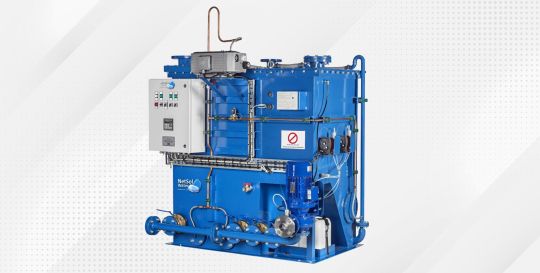
How Does an Effluent Treatment Plant(ETP) works/operates ?
Well, Effluent Treatment Plants(ETPs) work very similar to other treatment plants like the Sewage Treatment Plants(STPs) but few of the process maybe varying with some .
The working operation of such an Effluent Treatment Plants(ETPs) are summarized below :
Preliminary Level of Treatment :
The goal of preliminary treatment is to mechanically separate big-sized pollutants. plastics , paper, cloth, wooden-logs, & so forth . The following processes/technique are included in the preliminary treatment :
Screening is the initial unit activity in a waste water treatment facility. A screen is a gadget with equalized holes that is utilized to filter out major floating solids.
Sedimentation is also a physical water treatment technique that removes suspended materials from water using gravity.
Grit Chamber: The WasteWater that flows into the grit chamber eliminates the dense inorganic materials that ended up finding their way into the sewers, such as gravel, metal shards, & sand. Grit removal can help to prevent pump damage & operating troubles .
Clarification : Clarifiers are the treating tanks intended with mechanical ways/methods to continuously purge out sediments accumulated by sedimentation before sending them to biological treatment .
Primary Level of Treatment :
The goal is to remove floating & settleable items such suspended solids & organic waste . Both manual & chemical infusing approaches are employed in this therapy . It involves the following processing :
Flocculation is a physical techinque/process that does not entail neutralization of charge . It entails aggregating destabilized particles into big aggregates that can be easily removed from the water .
Coagulation is a procedure in which coagulants are introduced to a liquid in order to rapidly settle minute solid particles into a bigger bulk . It allows for particle removal by sedimentation and filtration .
Neutralization: The major goal of this procedure is to keep the pH in the range of 6-9 to fulfill the needs of the various processing units in the Effluent Treatment Plant(ETP) system .
Primary clarifiers : These decrease the velocity of the water to the point where organic solids sink to the bottom of the tank & contain equipment for removing skimming solids matter & greases as well from over the surface .
Equalization: The function of the equalization tank is to equalize the raw wastewater coming from different processing units.
The WasteWater is captured in a preexisting mixed effluent tank before being piped to an existing aeration tank that also serves as an equalization tank.
The floating aerator homogenizes the effluent before pumping it to the neutralization tank for treatment.
pH Control: In accordance to the Standards(BIS) , the pH of effluent should fall between 5.5 & 9.0.pH neutralization is a technique for modifying the pH of waste water.
Acidic waste with low pH : Bases are used to change the pH of a solution . Acids are used to change the pH of a solution in the event of alkali waste (high pH) .
Secondary Level of Treatment :
The goal of this secondary level of treatment is to get rid of the suspended particulates & residual organics from the effluent from the main treatment. This stage involves biological and chemical activities .
The activated sludge process utilizes air & a floc that is biological in nature consisting of micro-organisms to clean industrial WasteWater .
Aerated Lagoons : A treatment & a water stabilizing pond with artificial or mechanical aeration to improve or to get better WasteWater biological oxidation.
Trickling Filters: Also known as sprinkling filters, trickling filters are extensively used for the biological treatment of home sewage and industrial waste water.
Rotating Biological Contactor : This method includes exposing WasteWater to a biological medium in order to remove contaminants before discharging the treated wastewater into the environment .
Tertiary Level of Treatment :
The aim of the tertiary level of effluent treatment is to offer a last treatment stage to improve effluent quality before it is re-utilized/reclaimed , recycled , or released into the environment.
Again, Chemical coagulation & sedimentation are utilized to enhance solids matter removal from effluent following primary and secondary treatment.
Filtration: For guaranteed high-quality water, the cleared WasteWater is first transferred to the nearby filtration facility, which comprises massive filter blocks.
The Reverse Osmosis Pressure is utilized to drive effluent via a membrane that holds impurities on one side while allowing water with no contaminants to flow through on the other.
UV Disinfection: It is thought to be an excellent dis-infectant for WasteWater from industries. By retaining while maintaing the purity of water obtained , it leaves no residual or leftover dis-infection in the water. It generates no disinfection byproducts.
Confused about starting a business commerces in the effluent treatment of water for the existing industries/factories then Netsol Water is the company/brand which provide services & consultancy in this field of Water treatment & WasteWater treatment facilities like the Effluent Treatment Plant(ETP) & Sewage Treatment Plant(STP) .
Also read more article: Who’s The Best Effluent Treatment Plants Manufacturer In Delhi ?
#compactstpplant#netsolwater#commercial ro plant#sewage treatment plant#industrial ro plant manufacturer#sewage treatment plant manufacturers#effluent treatment plant
0 notes
Text
What Is The Purpose Of The RO Plant?
The purpose or the task a Reverse Osmosis does is very crucial for human beings. It processes raw water full of impurities/pollutants into purified water free from almost all kinds of organic(bacteria, microbes, planktons, etc) & inorganic(harmful chemical compounds which can be toxic or poisonous) substances that may harm humans as well as flora-fauna surroundings.
Visit the link for more information: What Is The Purpose Of The RO Plant?
#compactstpplant#netsolwater#commercial ro plant#sewage treatment plant#industrial ro plant manufacturer#sewage treatment plant manufacturers#effluent treatment plant
0 notes
Text
What Is The Cause Of The Water Crisis In India?
Water scarcity leading to water crisis is not a typical or common , even in countries with ample water resources
It is obvious that drastic climate-change , together with human factors like increasing population, spiking pollution, continuous wastage of water while consuming in an Unsustainable way, etc is increasingly depriving humans specifically children of their right & not only children but all animals to have access to safe water & sanitation .
Click on the link for get more information: What Is The Cause Of The Water Crisis In India?
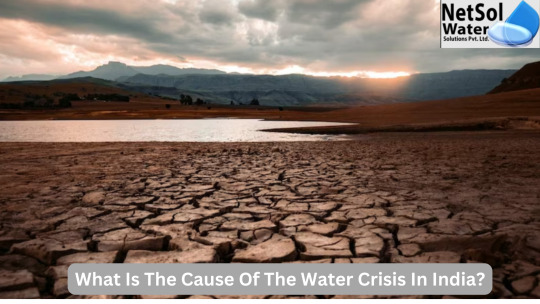
#water crisis#compactstpplant#commercial ro plant#sewage treatment plant#industrial ro plant manufacturer#netsolwater#effluent treatment plant#sewage treatment plant manufacturers
0 notes
Text
What Are The Five Effects Of Water Pollution?
Water Contamination or Water Pollution is the accumulation of impurities mainly caused by human activities in various sources of water such as river-streams , lakes , ponds , seas , oceans etc. because of which these sources of water becomes unusable , uncultivable for numerous applications such as drinking , cooking , in refineries , cleaning- washing , swimming and many other activities.
Visit the link for more information: What Are The Five Effects Of Water Pollution?

0 notes
Text
What Are The Critical Maintenance Requirements For An Effluent Treatment Plant?
Since, these Effluent Treatment Plants are working continuously and consists of a system of large nos. machineries, they also tends to wear out. Continuous operation of these machineries also requires maintenance, also for a big business ventures one must have an alternate or an extra arrangement for the same. If somehow any specific machinery tears out or damaged, so the other one adjacent or replacement of it can manages well and help the industries in minimizing the loss due to damages and any kind of failure of machineries. So here we discuss what are the critical maintenance requirements for an etp.
Effluents in the Effluent Treatment Plant facility’s efficient operation & maintenance is vital for various reasons . It guarantee that poor operation & maintenance of one portion does not cause the entire treatment process to fail.
Visit the link for more information: https://www.compactstpplant.com/what-are-the-critical-maintenance-requirements-for-an-effluent-treatment-plant/

0 notes
Text
Which Type Of Sewage Treatment Plant Is The Best?
Even effluent from various manufacturing and providing units is unfit to be discharged into the environment or into water bodies, thus sewage treatment plants are typically utilized to treat wastewater so that it can be rendered fit for use in the fulfillment of other purposes.
There are many different types of sewage treatment plant available on the market because they are all supported by different technologies and features. In order to use them effectively, one must be technically savvy and able to comprehend the specific steps involved in using sewage treatment plants.
Types of Sewage Treatment Plants in India
Activated sludge plant (ASP)
Rotating disc system.
Submerged aerated filter (SAF)
Suspended Media Filters (SMF)
Sequencing batch reactor (SBR)
Non-electric filter.
Trickling filter.
These wastewater treatment facilities all function in various ways and generate effluent of different quality. Also, they all deal with various forms of usage to varying degrees of success; some can withstand being underloaded while others don't perform as well. While some plants are better able to handle heavier loadings, others aren't prepared to treat large amounts of sewage efficiently.
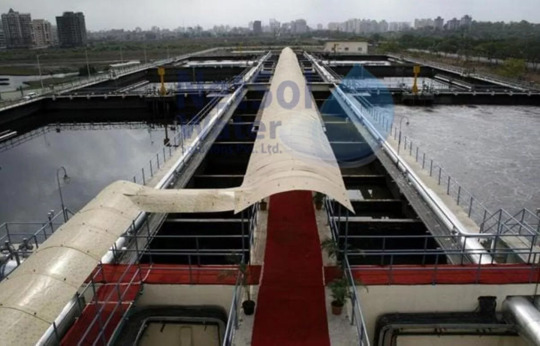
Which type of sewage treatment plant is the best?
Every sewage treatment option has disadvantages, whether they are financial, administrative, or other. In the lack of mains sewer access, a sewage treatment plant may be the best solution for the majority of people. There are less limits on where you can have one due to the higher quality of the runoff produced, and they can typically serve a larger population. Nevertheless, as we've already discussed, each option has its own drawbacks or sacrifices, so it's important to learn more about them all before deciding which is best for you.
Package Sewage Treatment Plants
Consider a sewage treatment plant as a more high-tech option to a septic tank. They come in a variety of forms, but they all adhere to the same fundamental ideas.
The main distinction between a package sewage treatment plant and a septic tank is that the former allows for both primary and secondary treatment. These facilities function by providing an environment that encourages the development of bacteria, which in turn decompose sewage into non-polluting byproducts.
If you choose to have this solution built, you will need an electrical supply because you will need it to artificially bring air into the treatment facility. The growth of aerobic bacteria, which are more efficient in decomposing sewage than the bacteria found in septic tanks, is made possible by the transport of oxygen via the sewage.
As a result, higher-quality effluent is generated, which enables its direct release to a watercourse—subject to Environment Agency Permission to Discharge.
Because to all of this, package sewage treatment facilities are appropriate for the majority of locations, including small residential subdivisions, commercial buildings, and single-family homes.
What do we offer?
We are working within the industry for quite while and thus , hold a really good experience about the manufacturing and services associated with the purification process of water or waste. We Are the proud Manufacturer of Sewage Treatment Plant, Effluent Treatment Plant, Commercial RO Plant in Noida, Delhi, India.
Compact STP Plant provide best water treatment plants in all over India.
If any detail information is required contact the Netsol Water Solution on -9650608473 or [email protected],
Visit The link for more information: What Is Effluent Treatment Plant ?
#compactstpplant#netsolwater#commercial ro plant#sewage treatment plant#industrial ro plant manufacturer#sewage treatment plant manufacturers#effluent treatment plant
0 notes
Text
How Do Sewage Treatment Plants Work ?
A sewage treatment facility is responsible for completely cleaning wastewater and removing contaminants before it is released back into the environment.
Let’s understand the working of sewage treatment plants!
STP works in a pattern such as:
1: Sewage passes through Bar Screen:
The Bar Screen's job is to screen out any potential particles that could clog the pipes inside the STP, preventing clogs. All of these particles are eliminated as part of STP maintenance after a few weeks.
2: Then Sewage sent to Equalization Tank:
The equalization tank's primary function is to act as a buffer. to position itself in relation to the rest of the ETP at a constant (Average) flow rate and collect the incoming raw effluent at extremely variable rates. During peak hours, ETP is provided at a high flow rate using blowers. The equalization tank stores and releases sewage when there is no or very little incoming effluent during non-peak hours. To avoid clogging, filtered effluent is conveyed in the equalization tank's intake line.
3: Sewage Passes through equalization tank to Aeration by using lifting pump:
Aeration is used in the water treatment process as a pretreatment to remove iron and hydrogen sulfide, which give water a rotten egg odor.
4: Tube Settler Tank
The Tube Settler Tank receives Poly Aluminum Chloride (PAC) from the PAC tank. PAC is a good coagulant that produces less sludge and has a high coagulant efficiency.
Tube settlers maximize the effective settling area by utilizing several tube channels that are close to one another and inclined at a 60-degree angle. As a result, settling times are reduced because the particle settling depth is significantly smaller than in a standard clarifier.
Because tube settlers capture the settleable fine floc that escapes the clarifying zone beneath them, the larger floc is able to travel to the tank bottom in a more settleable state. Solids are accumulated into a tight mass in the tube settler's channel, causing the solids to slide down the tube channel.

5: Immediate Storage Tank
Chlorine is discharged from the chlorine dosing tank into an adjacent storage tank.
When chlorine is used to treat water, it helps to postpone the activity of anaerobic sulfate-reducing chemicals while also lowering odor nuisance. Furthermore, chlorine aids in the elimination of germs while they are still in the immediate storage tank.
6: The Filter Seeds
The filter feed pump delivers water to the pressure sand filter.
The Pressure Sand Filter is made up of several layers of sand with varying sizes and specific gravities. These filters are designed to remove turbidity and suspended particles from feed water while causing as little pressure loss as feasible. The water is then routed through a carbon filter, which is the most effective at removing chlorine, silt, volatile organic compounds (VOCs), taste, and odor from water. They do not remove dissolved inorganic compounds, minerals, and salts (DOCs).
7: Treated water tank
This is the final destination of the water, depending on where the sewage treatment plant is located, where it will be disseminated for either home or industrial use.
Finally, the sludge is pumped into a holding tank.
Final disposal often entails using the material as fertilizer on fields, depositing it at waste disposal facilities, or burning it, either domestically or in collaboration with an external partner, frequently as part of the creation of energy.
What do we offer?
Netsol Water based in Greater Noida, is a well-known manufacturer of water and sewage treatment plants. We are the most demanding organization in the industry based on client feedback and job quality.
Sewage treatment protects public health by avoiding pollution, illness, and the risks associated with sewage pollutants. As a result, sewage treatment is required.
We have a reputation for being the best manufacturer of sewage treatment plants and effluent treatment plants. Aside from that, our USP is 24-hour customer service.
Netsol Water is the best sewage treatment plant Manufacturer.
Call on +91-9650608473, or write us at [email protected] for any support, inquiry or product-purchase related query.
Visit the link for more information: Who Is The Best Sewage Treatment Plant Manufacturer In Delhi?
#sewage treatment plant#compactstpplant#netsolwater#commercial ro plant#industrial ro plant manufacturer#sewage treatment plant manufacturers#effluent treatment plant#water#waterislife
0 notes
Text
Who Makes The Best Sewage Treatment Plant In Delhi ?
India generates 71% of the wastewater dumped into the river every day, while just making up 2% of the river's length and basin area. India's extravagant needs consume the majority of the Yamuna water that flows into the city. Regrettably, all that is left of the river after water usage is unadulterated sewage. But, you do not need to worry, because you have found the best sewage treatment plant manufacturers in India.
Sewage generation in Delhi
Firstly, the union territory estimated sewage generation is 3,330 MLD, while its overall treatment capacity is 2,896 MLD, i.e., around 38 STPs. In other words, the installed capacity is 2,896 MLD, which is 86.96% of the 3330 MLD of sewage generation. It demonstrates a lack in the 434 MLD's treatment capabilities, which is around 13.04%.
Secondly, of the 2,896 MLD installed capacity that is created, only 2715 MLD (35 STPs) are operationalized (93.75%), while only 2412 MLD of that capacity is actually used. Only 90 MLD of the STPs that are compliant have additional capacity.
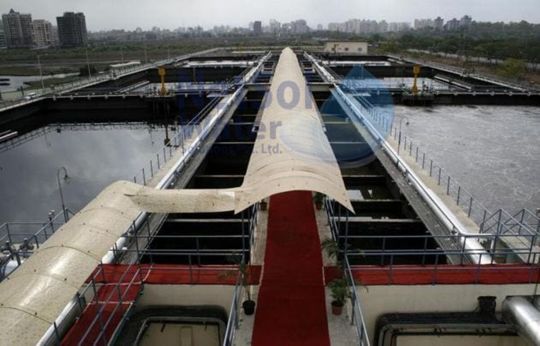
Finally, summer is the worst season for this problem. On an average, about 100 billion kilolitres of water flows through Yamuna, of which 80% passes through during the three monsoon months. Since there isn't much water running through it, during the other months, the river's ability to assimilate pollutants is greatly diminished, because the sewage is neither diluted nor scattered. Unfortunately, most India residents are unaware of this choking of the Yamuna.
Who makes the best sewage treatment plant in Delhi?
"We, Netsol Water, build sewage treatment facilities in India with pre-fabricated structures. We expand them to have higher gallon capacities, with the aid of technical breakthroughs."
Systems for Sewage Treatment Plants
We offer STPs depending on the capacity and needs of the customers:
We provide STP that is pre-fabricated;
We provide container types sewage treatment plants.
Application of Sewage treatment plants in India
When sewage is treated with the most modern, well-planned equipment, it can be returned for re-use while staying within legal bounds. Utilizing such sewage treatment facilities can be very advantageous, in the following places and circumstances:
Sewage treatment at Townships;
Sewage treatment at Industrial sector;
Sewage treatment at Commercial centers;
Sewage treatment at IT sector;
Sewage treatment at hotels;
Sewage treatment at work camp;
Sewage treatment at Institutions of higher learning;
Sewage treatment at Hostels, etc.
Conclusion
Surprisingly, almost 95% of India's sewage will be treated by the end of the year 2022, which will aid in lowering the pollutant load in the Yamuna River. By June 2023, the treatment capacity will be increased to 903 MGD, in order to handle the anticipated rise in sewage generation. This will be accomplished by building 48 new STPs, decentralized STPs in outer India, new STPs at India Gate (10 MGD) and Sonia Vihar (7 MGD), as well as modernizing the capacity of existing STPs.
Make the right choice for your sewage treatment!
As a reputable supplier and manufacturer of Sewage treatment systems in India, Netsol Water Solutions, produce a variety of sewage treatment plants. We are transforming the lives of Indiates, by greatly reducing the issue of water shortage. We are equipped with world-class designs, time-bound implementations, and a faultless capacity to operate such plants, thanks to our more than 10 years of experience and deep subject knowledge. Contact us right away, if you want to learn more about our wide range of sewage treatment products. Call us at +91-9650608473 or send an email to [email protected].
You can also visit the link for read more article: Who Is The Best Effluent Treatment Plant Manufacturer Supplier In India?
#compactstpplant#netsolwater#commercial ro plant#sewage treatment plant#industrial ro plant manufacturer#sewage treatment plant manufacturers#effluent treatment plant
0 notes
Text
What Is A Sewage Treatment Plant And How Does It Work?
A sewage treatment facility is in charge of cleaning wastewater thoroughly and removing toxins before it is released back into the environment.
The operation of a sewage treatment plant (STP) is comparable to that of a septic tank, but mechanical components offer extra processes to aid in the breakdown of particles and generate a cleaner, more ecologically friendly effluent.
How does Sewage Treatment Plant Work?
Bar Screen
The Bar Screen's job is to screen out any potential particles that could clog the pipes inside the STP in order to avoid blockages from occurring.
After a few weeks, all of these particles are removed as part of STP maintenance.
An Equalization Tank
The main job of the equalization tank is to serve as a buffer. to position to the rest of the STP at a stable (Average) flow rate and collect the incoming raw effluent that comes at highly variable rates. STP is delivered at a high flow rate during peak hours with the aid of blowers. When there is no or very little incoming effluent during non-peak hours, the equalization tank stores this sewage and releases it. Filtered effluent is carried in the equalization tank's inflow pipe to avoid clogging.
Aeration Tank
The Equalization Tank to Aeration Tank sewage is transferred using a sewage lifting pump.
Aeration is used as a pretreatment in the water treatment process to get rid of iron and hydrogen sulfide, which gives water a rotten egg odor. Iron and hydrogen sulfide are both effectively oxidized by air. It swiftly transforms ferrous iron that cannot be filtered into ferric iron that can be filtered, and it turns hydrogen sulfide to elemental sulfur, which can be readily removed from water by a filter.
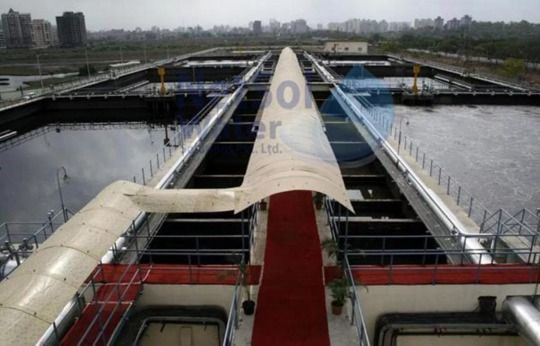
Tube settler tank.
Poly Aluminum Chloride (PAC) is transferred from the PAC tank into the Tube Settler Tank. PAC is a good coagulant with low sludge waste generation and high coagulant efficiency.
Tube settlers use numerous tubular channels that are close to one another and inclined at an inclination of 60 degrees to maximize the effective settling area. As a result, settling periods are shortened because the particle settling depth is substantially lower than that of a traditional clarifier.
Immediate storage tank.
The chlorine dosing tank discharges chlorine into the nearby storage tank.
When chlorine is used to treat water, it helps to delay the activity of anaerobic sulfate-reducing substances and also helps to lessen odor-related annoyance. Also, while the germs are still in the immediate storage tank, chlorine aids in their destruction.
The Filter Feeds
The water is sent to the pressure sand filter by the filter feed pump.
Several layers of sand with different sizes and specific gravities make up the Pressure Sand Filter. These filters are made to remove turbidity and suspended particles from feed water with the least amount of pressure loss possible. After that, the water is sent to a carbon filter, which is the best at eliminating chlorine, sediment, volatile organic compounds (VOCs), taste, and odor from water. They are ineffective at eliminating dissolved inorganic chemicals, minerals, and salts (DOCs)
Carbon filters can typically filter out particles that are between 0.5 and 50 micrometers in size. The filter description will include the particle size. A carbon filter's effectiveness is also dependent on how the flow rate is controlled. The pollutants are exposed to the filter media for a longer period of time when the water is permitted to pass through the filter at a slower rate.
Treated Water Tank
Depending on where the sewage treatment plant is located, this is the water's eventual destination, where it will be dispersed for either home or industrial usage.
Final disposal typically involves the use of the material as fertilizer on fields, deposition at waste disposal facilities, or incineration either internally or with an external partner, frequently as part of the production of electricity.
What do we offer?
Netsol Water is a renowned producer of water and sewage treatment plants situated in Greater Noida. Based on client feedback and job quality, we are the most demanding organization in the industry.
We have a reputation for being the top manufacturer of sewage treatment plant manufacturer, and effluent treatment plant manufacturer. Aside from that, our USP is 24x7 customer assistance.
Netsol Water offers the best sewage treatment plant.
Call on +91-9650608473, or write us at [email protected] for any support, inquiry or product-purchase related query.
You can visit the link for more information: Effluent Treatment Plant Manufacturers In India
#compactstpplant#sewage treatment plant#commercial ro plant#industrial ro plant manufacturer#sewage treatment plant manufacturers#effluent treatment plant#netsolwater
0 notes
Text
Importance Of Effluent Treatment Plant And Its Benefits ?
Wastewater that exits a treatment facility, a sewer, or an industrial outfall is referred to as effluent. Before being released into the sea, rivers, or streams, the effluent must be treated to minimize harm to the environment, wildlife, and public health. Manufacturers are accountable for properly handling their wastewater.
Let’s understand the importance of effluent treatment!
Why is an effluent treatment plant important?
The industrialization process is harming the environment on a global scale. India also faces significant environmental problems due to inefficient industrial wastewater treatment, especially given the nation's expanding small-scale manufacturing industry. The use of cleaner production techniques and waste reduction strategies is becoming more popular as a solution to industrial pollution discharge. For small and medium-sized businesses, Effluent Treatment Plant (ETPs) are one of the potential alternatives for efficient wastewater treatment.
When it comes to wastewater, the site's sewer/drainage system, and the contaminants with their corresponding limit values that must be reached, an Effluent Treatment Plant (ETP) is a crucial part of the manufacturing process. Additionally, by reducing the number of discharge sites in an industrial estate, the ETP helps environmental regulatory authorities enforce pollution reduction and environmental improvements more effectively. The cleaned industrial wastewater (or effluent) may be repurposed or disposed of into surface water or a sanitary sewer.

Benefits of ETP
1. Time-Efficient: The time when employees manually cleaned up wastewater is long gone. The introduction of the most recent technologies has made everything go incredibly smoothly. A wastewater treatment plant is more time-efficient since it can swiftly process enormous volumes of wastewater. In addition to this, wastewater is now purified so it can be used for other things.
2. occupies very little space: Do you believe that equipment and plants require a lot of space? But don't worry, the wastewater treatment plant takes up very little room, so you can set it up at either your large or little store. They are portable and small in size.
3. Straightforward installation: The installation of wastewater treatment facilities does not require a complicated structure. They require little maintenance and are simple to install. They are incredibly dependable and can even be installed above the ground.
4. Eco-friendly: STPs respect the environment. They lessen the threat to the environment and public health. It uses technology that has a strong track record of providing consistent performance. The most important benefit of STP is that they constantly protect the environment from pollutants.
5. Labor-saving: Wastewater was traditionally manually removed and collected. Modern technology allows for the extraction, organization, and transportation of wastewater, all of which require a minimum number of employees. Modern wastewater treatment facilities can also handle enormous volumes of wastewater, which cuts down on the lengthy workdays.
6. Create Energy: Significant amounts of the organic materials found in wastewater can be used to produce electricity. After being pre-treated, sludge is broken down via anaerobic digestion. Methane gas generated by anaerobic digestion powers the grid. Both the wastewater treatment plant and the residential areas' power needs can be met by it. Additionally, wastewater gas can be set up as a combined heat and power plant (CHP), which boosts the plant's overall effectiveness.
What do we offer?
Since wastewater composition varies, specialized wastewater management is required. Every project is different, and our experts at Netsol will assist you in selecting the most effective technique for treating wastewater in the best way.
Netsol Water combines cutting-edge technology with years of experience to handle the most challenging water treatment or wastewater treatment requirements of a wide range of clients, including small enterprises, corporations, and regional government agencies.
For further information, contact us at +91 9650608473 or email at [email protected].
You can also read this article: Understanding the Difference Between ETP, STP, and WTP
0 notes
Text
Who Is The Best Sewage Treatment Plant Manufacturer In Delhi ?
India generates 71% of the wastewater dumped into the river every day, while just making up 2% of the river's length and basin area. India's extravagant needs consume the majority of the Yamuna water that flows into the city. Regrettably, all that is left of the river after water usage is unadulterated sewage. But, you do not need to worry, because you have found the best sewage treatment plant in India.
Sewage generation in India
Firstly, the union territory of India's estimated sewage generation is 3,330 MLD, while its overall treatment capacity is 2,896 MLD, i.e., around 38 STPs. In other words, the installed capacity is 2,896 MLD, which is 86.96% of the 3330 MLD of sewage generation. It demonstrates a lack in the 434 MLD's treatment capabilities, which is around 13.04%.
Secondly, of the 2,896 MLD installed capacity that is created, only 2715 MLD (35 STPs) are operationalized (93.75%), while only 2412 MLD of that capacity is actually used. Only 90 MLD of the STPs that are compliant have additional capacity.
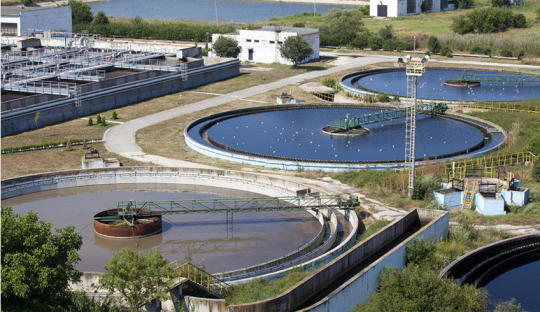
Finally, summer is the worst season for this problem. On an average, about 100 billion kilolitres of water flows through Yamuna, of which 80% passes through during the three monsoon months. Since there isn't much water running through it, during the other months, the river's ability to assimilate pollutants is greatly diminished, because the sewage is neither diluted nor scattered. Unfortunately, most India residents are unaware of this choking of the Yamuna.
Composition of sewage
The amount or rate of flow, physical state, chemical and poisonous composition, and bacteriologic status, are the primary factors we take into account, when examining its elements. It is primarily made up of pathogens, oil and grease, suspended particles, and organic materials.
Who is the best sewage treatment plant manufacturers in India?
"We, Netsol Water Solution, build sewage treatment facilities in India with pre-fabricated structures. We expand them to have higher gallon capacities, with the aid of technical breakthroughs."
Systems for Sewage Treatment Plants
We offer STPs depending on the capacity and needs of the customers:
We provide STP that is pre-fabricated;
We provide container types sewage treatment plants.
Application of Sewage treatment plants in India
When sewage is treated with the most modern, well-planned equipment, it can be returned for re-use while staying within legal bounds. Utilizing such sewage treatment facilities can be very advantageous, in the following places and circumstances:
Sewage treatment at Townships;
Sewage treatment at Industrial sector;
Sewage treatment at Commercial centers;
Sewage treatment at IT sector;
Sewage treatment at hotels;
Sewage treatment at work camp;
Sewage treatment at Institutions of higher learning;
Sewage treatment at Hostels, etc.
Conclusion
Surprisingly, almost 95% of India's sewage will be treated by the end of the year 2022, which will aid in lowering the pollutant load in the Yamuna River. By June 2023, the treatment capacity will be increased to 903 MGD, in order to handle the anticipated rise in sewage generation. This will be accomplished by building 48 new STPs, decentralized STPs in outer India, new STPs at India Gate (10 MGD) and Sonia Vihar (7 MGD), as well as modernizing the capacity of existing STPs.
Make the right choice for your sewage treatment!
As a reputable supplier and manufacturer of Sewage treatment systems in India, Netsol, produce a variety of sewage treatment plants. We are transforming the lives of India, by greatly reducing the issue of water shortage. We are equipped with world-class designs, time-bound implementations, and a faultless capacity to operate such plants, thanks to our more than 10 years of experience and deep subject knowledge. Contact us right away, if you want to learn more about our wide range of sewage treatment products. Call us at +91-9650608473 or send an email to [email protected].
#sewage treatment plant#industrial ro plant manufacturer#commercial ro plant#netsolwater#compactstpplant
0 notes
Text
What Is Effluent Treatment Plant ?
A waste water treatment process (WWTP) that is used to treat waste water is referred to as an effluent treatment plant, or ETP. It is mostly utilized in sectors like pharmaceuticals, textiles, and chemicals where there is a risk of severe water contamination.
What is effluent treatment plant?
It is possible to treat waste water and adhere to pollution board disposal guidelines by using an effluent treatment plant (WWTP).
Wastewater treatment is used in ETP plants to handle contaminants such suspended particles, oil and grease, heavy metals, organic and inorganic debris, and more. It is possible to treat using a batch technique or continuous flow process. Chemical treatment, biological treatment, a combination of chemical and biological treatment, and heat treatment are the different types of wastewater treatment facilities.
Several types of treatment methods in ETP
Chemical treatment, biological treatment, a combination of chemical and biological treatment, and thermal treatment are the several types of wastewater treatment plants.
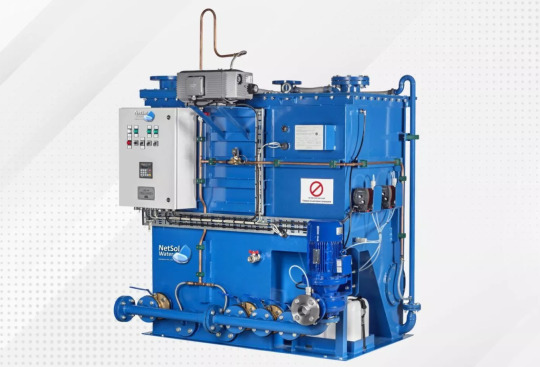
How does ETP Plant Work?
The treatment's conceptual approach calls for the elimination of suspended materials, the dissolution of organic waste, and the processing of sludge for disposal. Several procedures that are involved are:
EQUALIZATION: The raw effluent from various processing units is balanced in the equalization tank. The wastewater is gathered in an already-existing mixed effluent tank and sent to an already-existing aeration tank, which also serves as an equalization tank. The effluent is homogenized using the floating aerator before being pumped to the neutralization tank for treatment.
pH CONTROL: The Bureau of Indian Standards specifies that the pH of effluent should range from 5.5 to 9.0. (BIS).
Wastewater's pH is changed through pH neutralization.
For waste that is acidic (low pH): Bases are used to modify the pH of a solution.
In the case of alkali waste (high pH): Acids are used to modify the pH of a solution.
COAGULATION: The process of coagulation entails mixing untreated water with liquid aluminum sulphate. Due to the mixing that results, small dirt particles stick together. Via settling and filtration, it is simple to remove the bigger, heavier particles created by the combination of these smaller ones.
SEDIMENTATION: Water moves slowly during this process, which causes the heavy particles to sink to the bottom. The particles that collect at the bottom of a container are known as sludge.
FILTRATION: The process of filtering involves putting water through a device that traps particles. Sand and gravel layers are used to create the filters. These filters need to be cleaned frequently using backwashing.
DISINFECTION: Prior to entering the distribution system, water is disinfected. Chlorine is used to clean and sanitize water.
SLUDGE DRYING: Solids are collected and brought to drying beds via sedimentation, which also causes them to settle. The sludge charging should be halted and the bed separated so that natural evaporation can dry it out after the sludge thickness reaches around 300 mm. It takes about ten days to do this.
Conclusion
Most businesses produce wastewater, often referred to as effluent, as a byproduct of their manufacturing process. The effluent/wastewater produced varies greatly in flow and pollution severity and contains a number of contaminants/pollutants that an effluent treatment facility may help to remove (ETP).
What do we offer?
Thanks to the growing popularity of our sewage treatment plants, Compact STP Plant is gradually establishing itself as the preferred effluent treatment plant supplier in India (ETP).
Notwithstanding this, there is a sizable market for effluent treatment plants (ETP), and Netsol services in India have successfully gained the trust of the client thanks to remarkable, independently evaluated results and a lack of violations thus far. Because Netsol is so confident in the various effluent treatment plant (ETP) techniques, we are implementing them for each and every one of our clients in order to benefit from them in the long term.
To contact Netsol Water Solutions, call on +91 9650608473 or send an email to [email protected]
For more information you can also read the other article and click on the link: What Is An Effluent Treatment Plant Manufacturer?
#netsolwater#compactstpplant#commercial ro plant#sewage treatment plant#sewage treatment plant manufacturers#effluent treatment plant#industrial ro plant manufacturer
0 notes
Text
Effluent Treatment Plant
Effluent Treatment Plant or ETP is one type of wastewater treatment system which is particularly designed to purify artificial wastewater for its exercise. Its end is to release safe water to the terrain from the dangerous effect caused by the effluent.
Visit the link for more information: https://www.compactstpplant.com/effluent-treatment-plant/
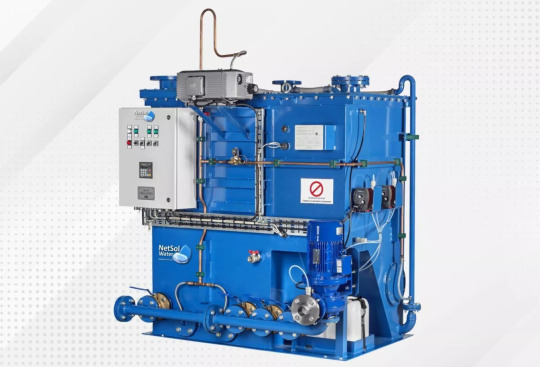
0 notes
Text
What Is An Effluent Treatment Plant Manufacturer?
Compact STP Plant is an excellent investment for all manufacturing industries, with the lowest operating costs and the longest emptying intervals in the market. Therefore, it is rightly said that, before taking a decision, always think first!
Contact Netsol Water Solutions at +91 9650608473 or [email protected] for water treatment professionals.
Visit the link of the article and get more information about effluent treatment plant manufacturer: What Is An Effluent Treatment Plant Manufacturer?
#compactstpplant#industrial ro plant manufacturer#effluent treatment plant#effluent treatment plant manufacturers
0 notes
Text
What Is An Effluent Treatment Plant Manufacturers?
Netsol Water Solution is an excellent investment for all manufacturing industries, with the lowest operating costs and the longest emptying intervals in the market. Therefore, it is rightly said that, before taking a decision, always think first!
Contact Netsol Water Solutions at +91 9650608473 or [email protected] for water treatment professionals.
Visit the link for more information: https://moxn5ycafzg.com/what-is-an-effluent-treatment-plant-manufacturer/
0 notes
Text
What Is Effluent Treatment Plant?
Depending on the kind of effluent, different effluents require different treatments. Wastewater enters the effluent or sewage treatment facility and through many processing steps before being released into the environment.
What is effluent treatment?
It is possible to treat waste water and adhere to pollution board disposal guidelines by using an effluent treatment plant (WWTP).
Wastewater treatment is used in ETP plants to handle contaminants such suspended particles, oil and grease, heavy metals, organic and inorganic debris, and more. It is possible to treat using a batch technique or continuous flow process. Chemical treatment, biological treatment, a combination of chemical and biological treatment, and heat treatment are the different types of wastewater treatment facilities.
Is there any requirement for effluent treatment?
Globally, the industrialisation process is damaging the environment. Due to ineffective industrial wastewater treatment, India also has serious environmental issues, which is especially concerning considering the country's burgeoning small-scale manufacturing sector. As a remedy for industrial pollution discharge, the employment of cleaner production methods and waste reduction techniques is growing in popularity. Effluent Treatment Plants (ETPs) are one of the viable options for effective wastewater treatment for small and medium-sized industries.
An Effluent Treatment Plant (ETP) is a critical component of the production process when it comes to wastewater, the site's sewer/drainage system, and the contaminants with their corresponding limit values that must be attained. Also, the ETP aids environmental regulatory authorities in more successfully enforcing pollution reduction and environmental improvements by minimizing the number of disposal points in an industrial estate. A sanitary sewer or surface water may be used to dispose of the cleaned industrial wastewater (or effluent).

Importance of ETP
Energy is conserved, trash is cleaned up using economical operations, and regulatory requirements are met by effluent treatment facilities.
Fundamentally, the design of an effluent treatment plant is heavily influenced by the industry and location. Location and wastewater characteristics should be taken into consideration when designing effluent treatment plants. The quality of treated and untreated effluent is strongly taken into account while building a wastewater treatment facility. When choosing a course of treatment, a number of additional factors must be taken into consideration, including the effectiveness, cost, and dependability of the course of treatment.
Goals to accomplish
To clean and reuse wastewater from industry.
Restricting the use of potable and freshwater in industry.
To reduce operational production costs or the amount spent on water purchases.
To avoid severe penalties, abide by government regulations regarding the emission or discharge of environmental toxins from various businesses.
To prevent pollution and promote long-term growth while protecting the environment.
What do we offer?
Specialized wastewater management is necessary because wastewater composition varies. Because every project is unique, our professionals at Netsol will help you choose the method that will treat wastewater the best.
The most difficult water treatment or wastewater treatment requirements of a wide range of clients, including small businesses, companies, and regional government agencies, are handled by compactstpplant by combining cutting-edge technology with years of experience.
For further information, contact us at +91 9650608473 or email at [email protected].
Also read the article for get more information about it: What Is Sewage Treatment Plant?
#effluent treatment plant#compactstpplant#netsolwater#sewage treatment plant manufacturers#sewage treatment plant
0 notes